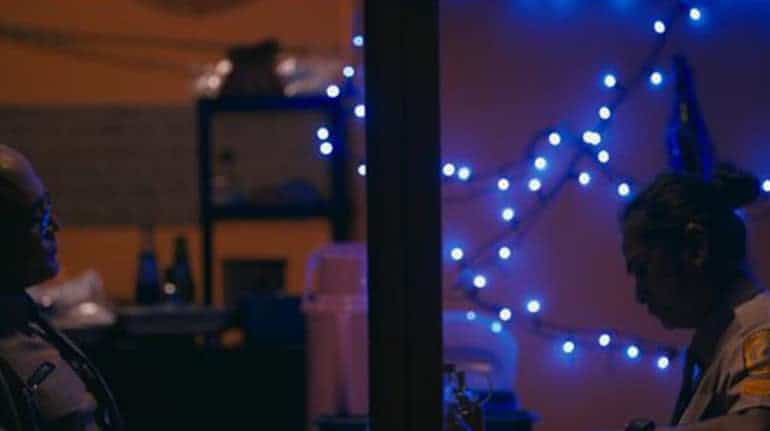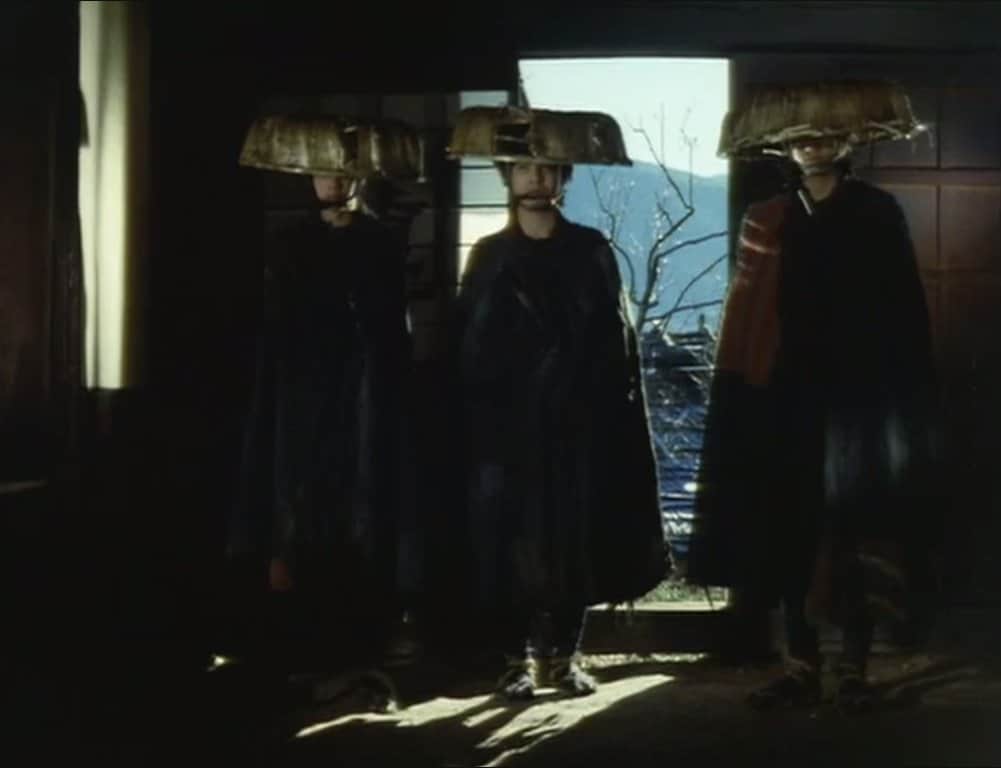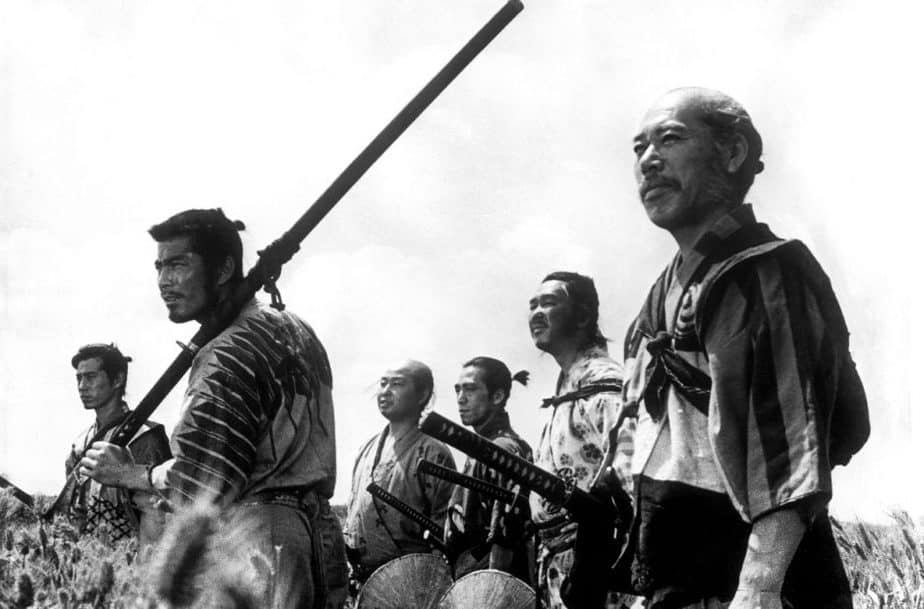10. Cleaners (Glenn Barit, Philippines)

The social comments vary from light and comic to serious and dramatic, from the problem of defecating in school and the difficulties school politics present, to racism, teen pregnancy and the consequences of the practices of politicians. The presentation, however, despite the fact that uses young teenagers as medium, occasionally surpasses the borders of either the crude or the grotesque, with particularly the ending of the third segment being quite difficult to watch, despite the detachment the particular visuals offer. The shock however works quite well for the narrative, intensifying the recurring message that “good things can result from bad situations”. (Panos Kotzathanasis)
9. Where We Belong (Kongdej Jaturanrasame, Thailand)

Using a coming-of-age story, mostly revolving around two girls, Jaturanrasame, makes a number of sociopolitical comments regarding Thailand. The frustration young people feel due to the choices the previous generation did and continues to do, and the subsequent will of the new one to leave the country is the most central one. At the same time, through a rather sensitive approach. “Where we Belong” also presents the issues girls have to face just before reaching adulthood, particularly regarding the concepts of friendship, work,and family. (Panos Kotzathanasis)
8. Kalel, 15 (Jun Robles Lana, Philippines)

Jun Robles Lana has shot the film based on his own script, and it's an accomplished piece of writing with very little to complain about, except that the bridge between the dysfunctional family members is built only half-way. Strangely enough, film's narrative doesn't get damaged and the holes are being patched by the interesting framing and excellent ensemble cast, particularly concerning the choice of Elijah Canlas for the titular role. (Marina Richter)
7. Bamboo Dogs (Khavn, Philippines)

Khavn uses his own unique approach to present a very serious topic, once more pulling no punches in both his comments about the case and his presentation. Furthermore, the focus is not actually on the case, but on the ties of the police with organized crime, and in general the corruption of the Force at the time. At the same time, the fact that not all police officers were the same is highlighted quite eloquently, although this is a comment on the level of corruption and cruelty and not on its existence. (Panos Kotzathanasis)
6. The Cave (Tom Waller, Thailand)

The presence of some of the real protagonists and many less-known facts like the peasants refusing compensation for the damaged crops in order to donate to the cause, reiterate the core concept of the film, that the rescue was a joined effort, an alliance of people from the most different corners of the planet, working together for a common goal in an unprecedented operation. In times where bad news are the easiest way to impact and awe, it is an exhilarating feeling to be able to discover the opposite. (Adriana Rosati)
5. Alpha: The Right to Kill (Brillante Mendoza, Philippines)

Brillante Mendoza directs a film that unfolds much like a documentary, with hand-held cameras, drones, lengthy tracking shots that occasionally make the film look like it was completely shot in one take, “muddy” colors, and a permeating emphasis on realism. In reality though, Mendoza uses these techniques in order to present an “intellectual” action film, which functions much as Erik Matti's “BuyBust”, with the emphasis though, being on the social commentary rather than the violence and the action, although these two are anything but scarce here. The action part finds its apogee in the raid, which is rather impressively shot, utilizing all the aforementioned techniques, while providing the apogee of both Joshua A. Reyles's cinematography and Diego Marx's editing. Furthermore, the buzzing sounds (music one could say) by Diwa de Leon are implemented exceptionally here, adding a sense of danger that intensifies the effect of agony to the highest point. (Panos Kotzathanasis)
4. On the President's Orders (James Jones and Olivier Sarbil, Filipino-themed)

The result is an in-your face revelation of a government policy that does not separate the users from the addicts in any way, and even more, that has allowed killings to be perceived as simply applying the law. And the fact remains, that as long as Duterte is in command, nothing will change, although the equally shocking fact is that he actually has a lot of people who agree with his tactics. (Panos Kotzathanasis)
3. Remnants of a Revolution (Cha Escala, Philippines)

The narrative style Escala implements works quite well, as it combines Pepe's interviews, her own narration that fills in the gaps, archive footage from the actual events that led to Marco's fall, the interactions between father and son, the testimonies of his former comrades and a number of dramatization sequences, which seem a bit out of context, but in the end, add to the overall aesthetics of the documentary. The work done in the editing is also great, as it connects all the aforementioned parts in a way that keeps the interest unwavering, although the main subject had already took care of that. (Panos Kotzathanasis)
2. BNK48: Girls don't cry (Nawapol Thamrongrattanarit, Thailand)

The movie could have been an upbeat one, with dreams coming true, lots of cuteness and glitters. It isn't. It focuses on the ambivalent relationship between the members: they spend a lot of time together, are a band, but are also competitors. The bitterness also comes from the fact that hard work doesn't always pay. It's not the one that tries harder who surely gets the job. The whole situation makes them grow faster, and even if it's on a different scale and environment, the questions raised are universal and relatable. (Oriana Virone)
1. Rom (Tran Thanh Huy, Vietnam)

Tran Thanh Huy directs a film that works in a number of levels, through a score of different genres and through a plethora of practices that could well be perceived as tributes to some great movies of world cinema. Regarding the last aspect, the overall great editing of Lee Chatametikool and TranThanh himself is quite reminiscent of the sudden-cut tactics Guy Richie, as implemented in films like “Lock, Stock and Two Smoking Barrels” while the chasing scenes have something of a “Bourne” and “Run Lola Run” essence. The whole setting of the slums, with its violent reality and the fact that the protagonists are teenagers shares many similarities with films like “City of God” and “Slumdog Millionaire” while the whole concept of the numbers reminded me of a plethora of Hollywood gangster movies that used the Harlem game of numbers, and particularly “Hoodlum”. However, the aforementioned do not mean that Tran Thanh just copied other films, since the way he has embedded all the aforementioned elements in a Vietnamese setting and combined them in order to produce something original mean that he completely owns the end result. (Panos Kotzathanasis)














